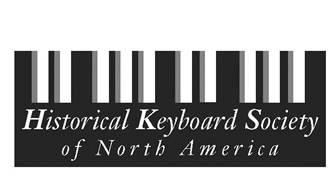
The Southeastern Historical Keyboard Society (SEHKS) and the Midwestern Historical Keyboard Society (MHKS) have merged, forming a new organization, the Historical Keyboard Society of North America (HKSNA). HKSNA is a non-profit organization comprised of members who love and seek to promote the study of early keyboard instruments such as the harpsichord, clavichord, historical organ, and fortepiano, and music written for them, through performances, instruction, and research. Members include instrument builders, performers, teachers, scholars, and students, as well as amateur players and enthusiasts.
While representing a larger combined geographical area, the new society will continue to further the goals and activities of its predecessor organizations. HKSNA will continue to produce and publish the scholarly refereed periodical, Early Keyboard Journal, as well as a semi-annual Newsletter. In addition, it will assume sponsorship of the Mae and Irving Jurow International Harpsichord Competition for young performers, and the Aliénor International Harpsichord Composition Competition, encouraging the composition of new music for the harpsichord.
Members also have an opportunity to attend the Annual Meeting/Conference held in a different location each spring, which features concerts, lectures, scholarly paper readings, and exhibits of scores, books, recordings, and early keyboard instruments of all types. Membership is open to all.
For information about membership contact David C. Kelzenberg, Secretary, Historical Keyboard Society of North America, 2801 Highway 6 East, Suite 344, Iowa City, IA 52240 USA, [email protected], or www.historicalkeyboardsociety.org.

